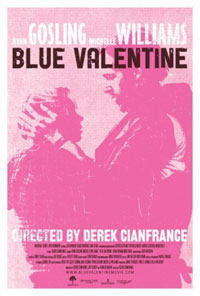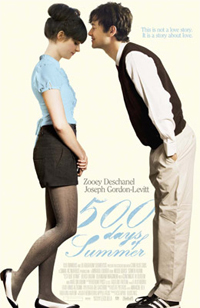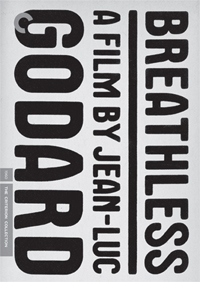Midnight in Paris [2011] – Woody Allen

With Woody Allen’s filmography spanning over 40 years and over 40 films, this is surprisingly only the second of his works that I’ve seen in full. The other being Annie Hall, I consider myself a fan of his work and an appreciator of his humor. After viewing Midnight in Paris, my thoughts of him are maintained due to the light-hearted, intelligent and witty nature of the film. Though devoid of an auteur-like aesthetic and major character development, Midnight in Paris succeeds in illustrating the purity and romanticism of the past while drawing a genuine appreciation for living in the moment.
Owen Wilson plays the lead of the film as Gil, a Hollywood screenwriter who wishes to replace his current craft with his long time love, literature. Though usually put off by the overwhelming acting style of Wilson, his performance here is subtle and delicate. Gil is visiting Paris with his fiancé Inez (Rachel McAdams), who is a materialistic snob to the highest degree. While dining with Inez’s far right parents (Kurt Fuller, Mimi Kennedy), they run into an old friend of Inez, Paul (Michael Sheen), who seems to be bursting with erroneous and hasty “facts” about everything he encounters. Gil immediately winces at Paul’s egotistical demeanor, and leaves the group to wander through Paris in a buzzed stupor as Inez, Paul and Paul’s wife Carol (Nina Arianda) go out dancing. Finding himself lost and sitting on a stoop, a nearby bell rings midnight and Gil is visited by an old-fashioned car diving by on the road. The passengers invite him to join them and he is transported back to the Paris of the 1920s, surrounded by his literary and artistic idols of old.

The ensemble group of artists Gil encounters are played by a similarly ensemble group of actors, with Ernest Hemingway, F. Scott Fitzgerald, Gertrude Stein and Salvador Dali being played by Corey Stoll, Tom Hiddleston, Kathy Bates and Adrien Brody, respectively. Though I wasn’t familiar with some of the historical figures portrayed in the film (Cole Porter, Josephine Baker, Man Ray), their particular achievements weren’t of paramount importance. Seeing Gil’s expression of awe in the presence of his idols is truly delightful and Wilson approaches the performance with such care that his character’s wide-eyed disposition feels as authentic as can be. Gil finds his counterpart in Adriana (Marion Cotillard), a fashion designer and mistress of Pablo Picasso that is as much of a “traveler” in the era as he is. Through Gil’s new relationships he gains insight on what he’s looking for in life and how he can attain happiness. The film is less about his romantic relationships and more about how he learns from observing the past and seeing the true natures of these iconic individuals that he’d only previously known through accounting history.
Midnight in Paris is a light, intelligent romantic comedy that has no pretension and refreshing wonder. Clad with a philosophical air rather than a desperate grasp for emotion, Woody Allen has created a film that provides an easy breath of life for anyone that neglects their current situation. Neither challenging nor heavy-handed, Midnight in Paris fulfills its purpose with ease and grace.
Blue Valentine [2010] – Derek Cianfrance

I saw Blue Valentine in a nearly full theater, with most of the occupants being late middle-aged couples. I would have to say that most of them went in expecting a light cheese-ball tearjerker, considering the amount of mundane ‘romantic’ drivel churned out by big name movie companies. They turned out being quite taken aback by the film’s content, considering the people who left the theater and the nearby woman who was covering her ears and cowering in her seat. It was clear affirmation that the casual moviegoer is too expectant of bullshit to appreciate the raw and realistic demeanor of Blue Valentine.
The film has a very beautiful aesthetic that coincides with its non-linear editing. The pre-marriage scenes were filmed using Super 16mm which gives them a very organic and warm look, while the post-marriage scenes were shot using a RED One digital camera which produces a very crisp, almost mechanical image. This difference in image clearly delineates the two periods within the narrative as well offers visualizations of their different themes. The grainy and less-detailed image of Super 16mm shows that the hyper-romantic moments felt by the couple pre-marriage are almost a mirage, while the near lossless images of the RED One manage to capture the true reality of the couple’s relationship.

Featuring powerful performances by both Ryan Gosling and Michelle Williams, Blue Valentine‘s most appealing quality is its gritty and raw honesty. Ryan Gosling, being known for his romantic tear-jerking performances (The Notebook… zzz), seems largely in his element for the pre-marriage sequences, when his character is bursting with youthful romance. Not to discredit his performance in the post-marriage scenes which are equally heartfelt. Michelle Williams’s chararacter is more consistent throughout, seeming to have a film grasp on reality throughout her years. Both have remarkable performances which are essential to the film’s realism.
Blue Valentine is a moving film on its own, but it’s a serious breath of fresh air within the category of romantic modern cinema. While most films focusing on love and relationships are fantastically optimistic, Blue Valentine is almost an anti-romance with its brutally honest sentiments. This is its strongest quality, and it’s one that more films should embrace. I’d like to see more films like Blue Valentine that appreciate real world significance over money-making potential.
(500) Days of Summer [2009] – Marc Webb

The “indie flick” is an idea that I’m not fond of. An “indie flick” isn’t just an independent film, it’s an independent film that succumbs to the trends of the indie music scene. This leads to a kitschy movie that’s appeal is a non-mainstream credo while being a mainstream success. 500 Days fits firmly into this little genre toilet bowl. This made me very reluctant to watch, but overall it wasn’t as bad as I expected. Still, if I never see this film again I may be able to continue my life in a mostly normal fashion.
As soon as I started watching I begun expecting the worst. Is this a typical romantic comedy? Are the two beautiful people going to end up in love together at the end? Since the film is cut in a non-linear fashion, the audience is shown a day near the end, in which Joseph Gordon-Levitt and Zooey Deschanel are sitting at a bench together hold hands, and a wedding ring is emphasized on the hand of Deschanel. Yet we don’t learn until the end that it’s a red herring, and the ring represents Deschanel’s marriage with a different man. I was happy that in the end the two didn’t end up together, and it was rewarding to see Gordon-Levitt meet a new chick just as good looking as Zooey… until the girl says her name is autumn. Here I was, thinking that a romantic comedy wouldn’t have to resort to being a cheese-fest. Oh was I wrong.

But really, it wasn’t that bad. I wasn’t too into Deschanel’s performance, though she’s good at acting like a mannequin with nasal congestion. Her eyes are her most redeeming quality. Joseph Gordon-Levitt on the other hand was great all around. He’s managed to be a consistently good actor, all the way from Angels in the Outfield to Inception which is no easy feat. With charming enthusiasm, he’s great at playing the heart-wrenched victim. The reversal of standard roles that deviates from your typical chick flick was refreshing. Actually all of the deviations from the typical chick flick were refreshing, especially Gordon-Levitt’s impromptu dance number which is possibly the best sequence in the movie.
Looking back, the movie was better than I’d expected. More than anything it was ‘cute’. But who needs that?
Breathless [1960] – Jean-Luc Godard
Breathless is one of my first exposures to French new wave cinema, aside from The 400 Blows by François Truffaut (who is not only a friend and collaborator of Godard, but also devised the scenario for Breathless). I really didn’t know what to expect going into the film, but I was immediately charmed.
The most pivotal elements within Breathless I believe involve the style of the film as a whole. Early on we have our main character Michel (Jean-Paul Belmondo) imitating a photo of Humphrey Bogart. To the petty thief Michel, Bogart is the real deal straight from Hollywood. However, within Breathless, Belmondo’s portrayal of the rambunctious and crude main character is as authentic as it could feel for a film viewer. Coupled with the lively and uptempo free-form jazz score and Godard’s revolutionary use use of jump cutting, this film is alive and pumping with adrenaline.
It’s always a pleasure to see characters that are at the same time lovable and despicable. Michel and his lover Patricia (Jean Seberg) both manage to be disrespectful, sarcastic, sly and manipulative and yet they are about as cool as could be. Michel loves Patricia, yet has no problem kicking her to the curb. Patricia loves Michael yet is responsible for his demise. These dynamic characters and their lively portrayals contribute to making the film even more enjoyable.
Godard became a titan of cinema after this film because of his inventive and fresh filmmaking style. Compared to the typical Hollywood films of the same time period, there’s no surprise why. Godard took the standard Hollywood gangster film and took the viewer out of the theater and into the back seat. While Michel is on his death bed, the last thing he says to his lover is, “You make me want to puke”. Cinema has never felt so real.
Further Reading:
Breathless Then and Now by Dudley Andrew
Breathless by John Powers


1 comment